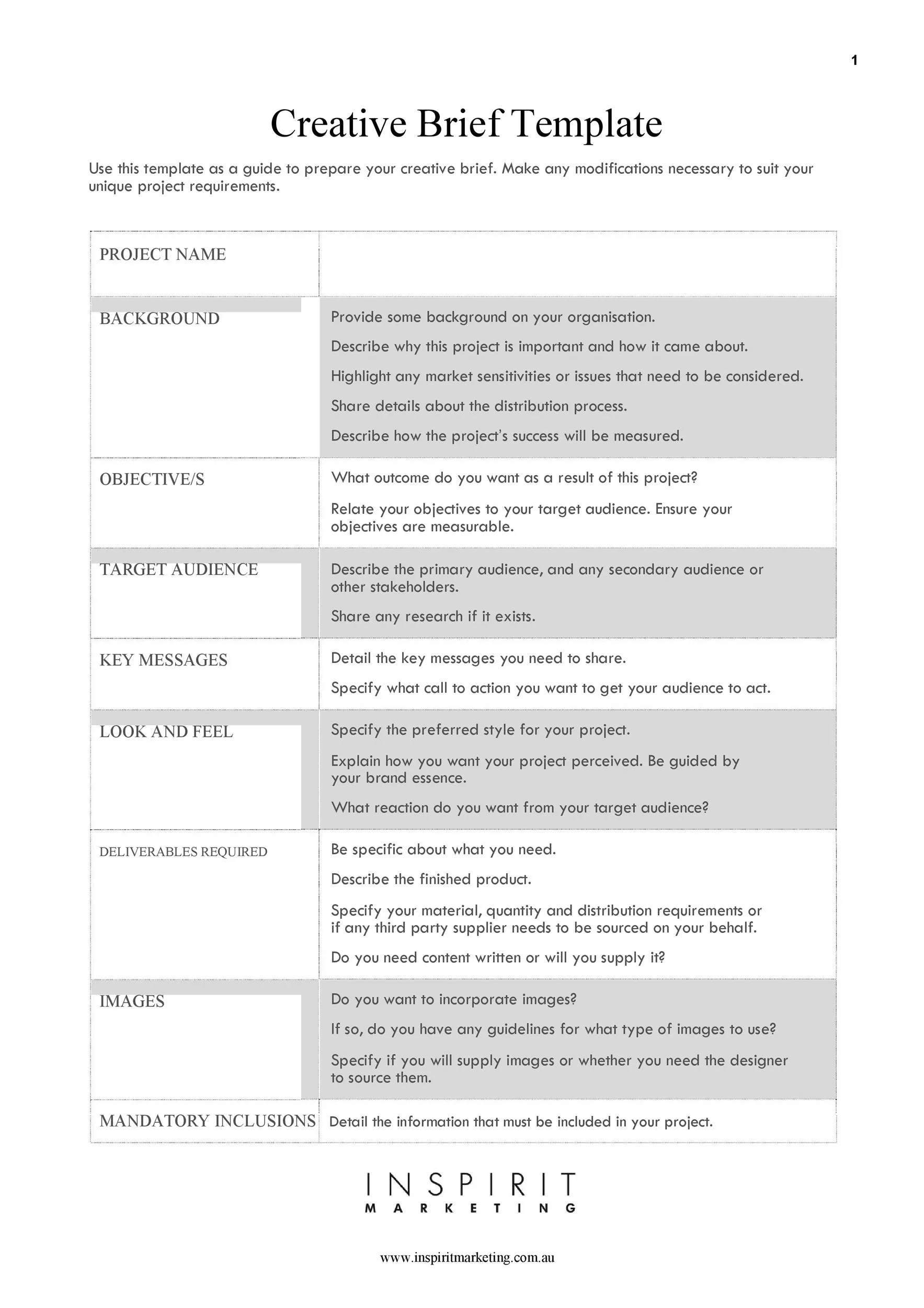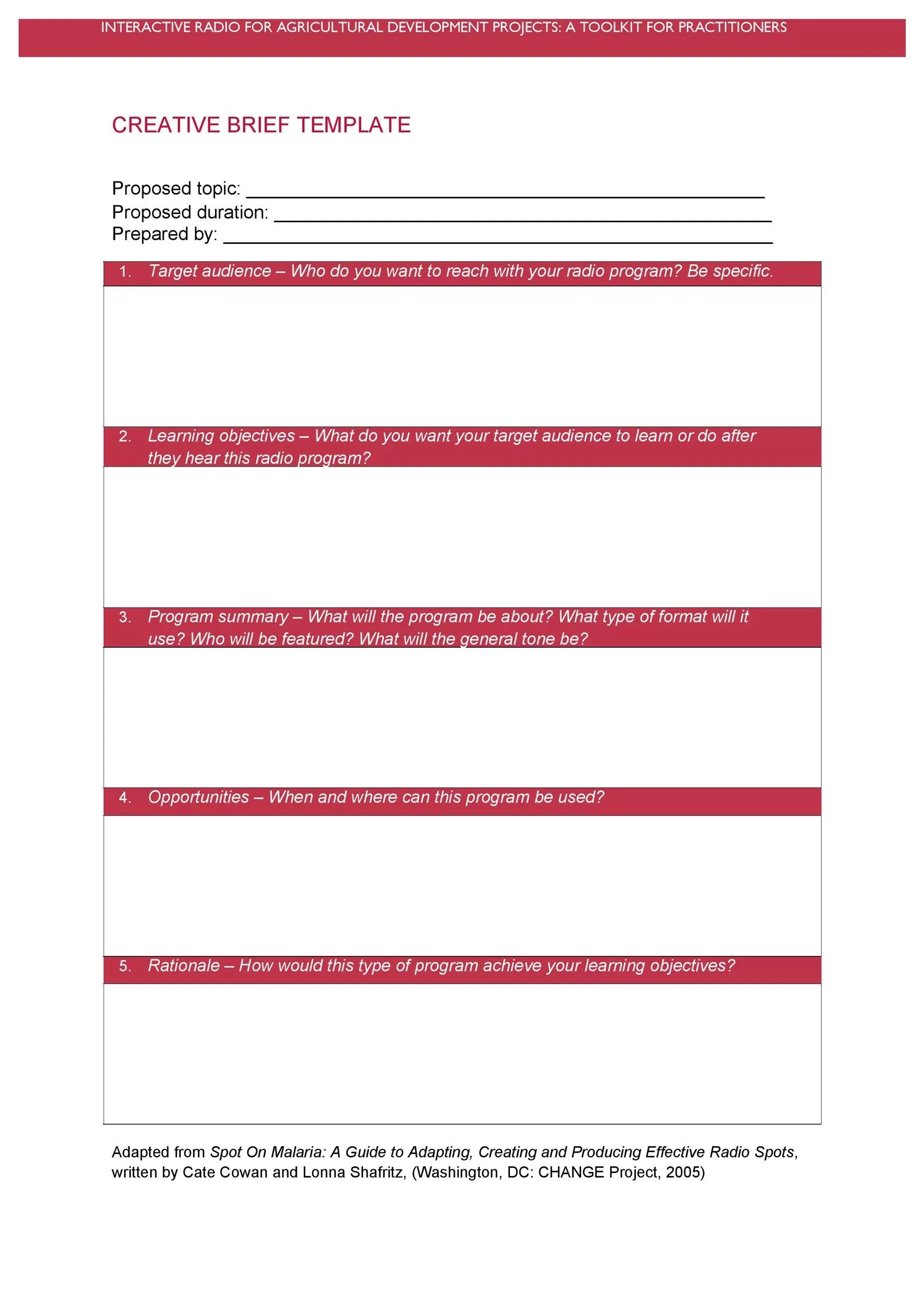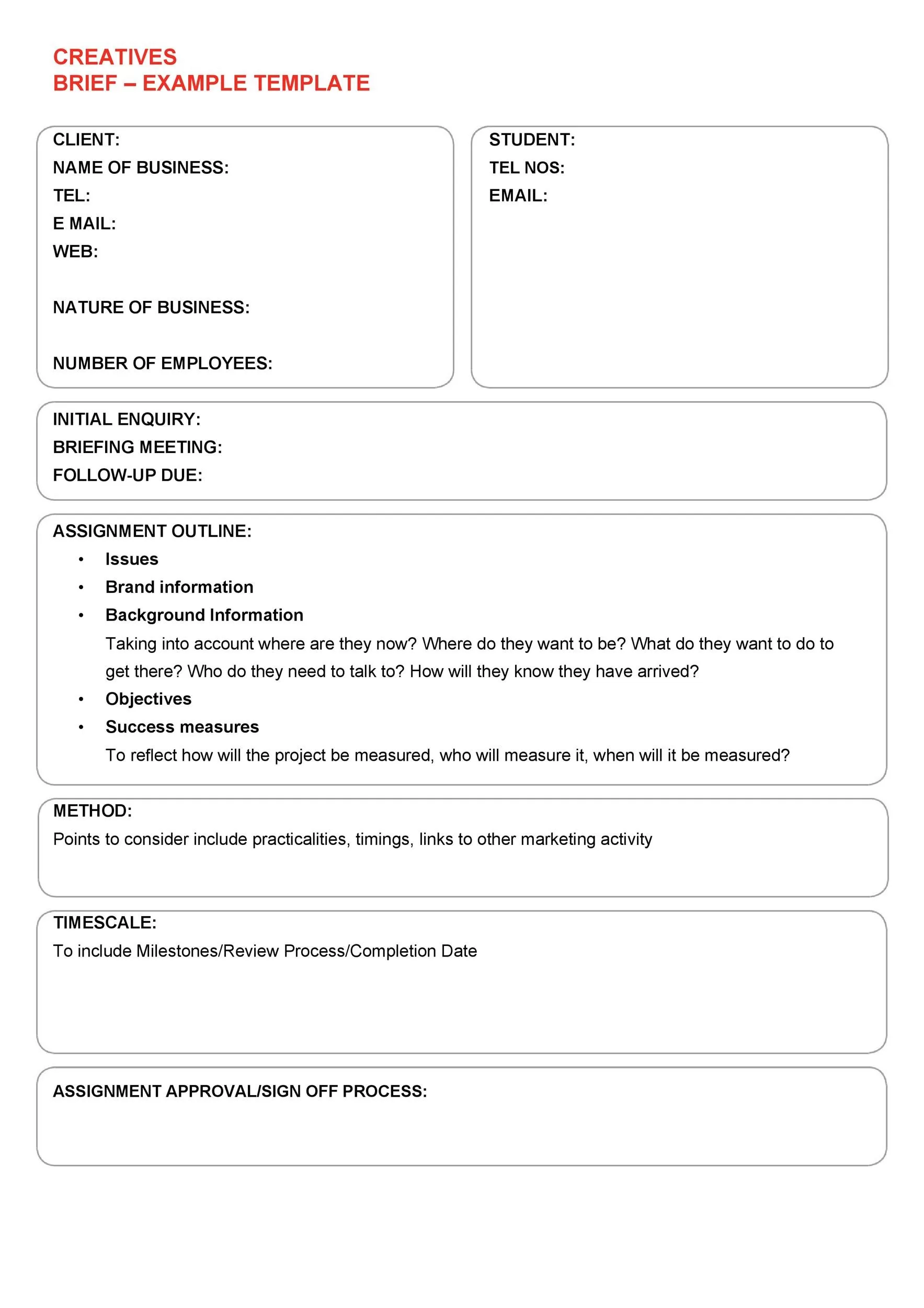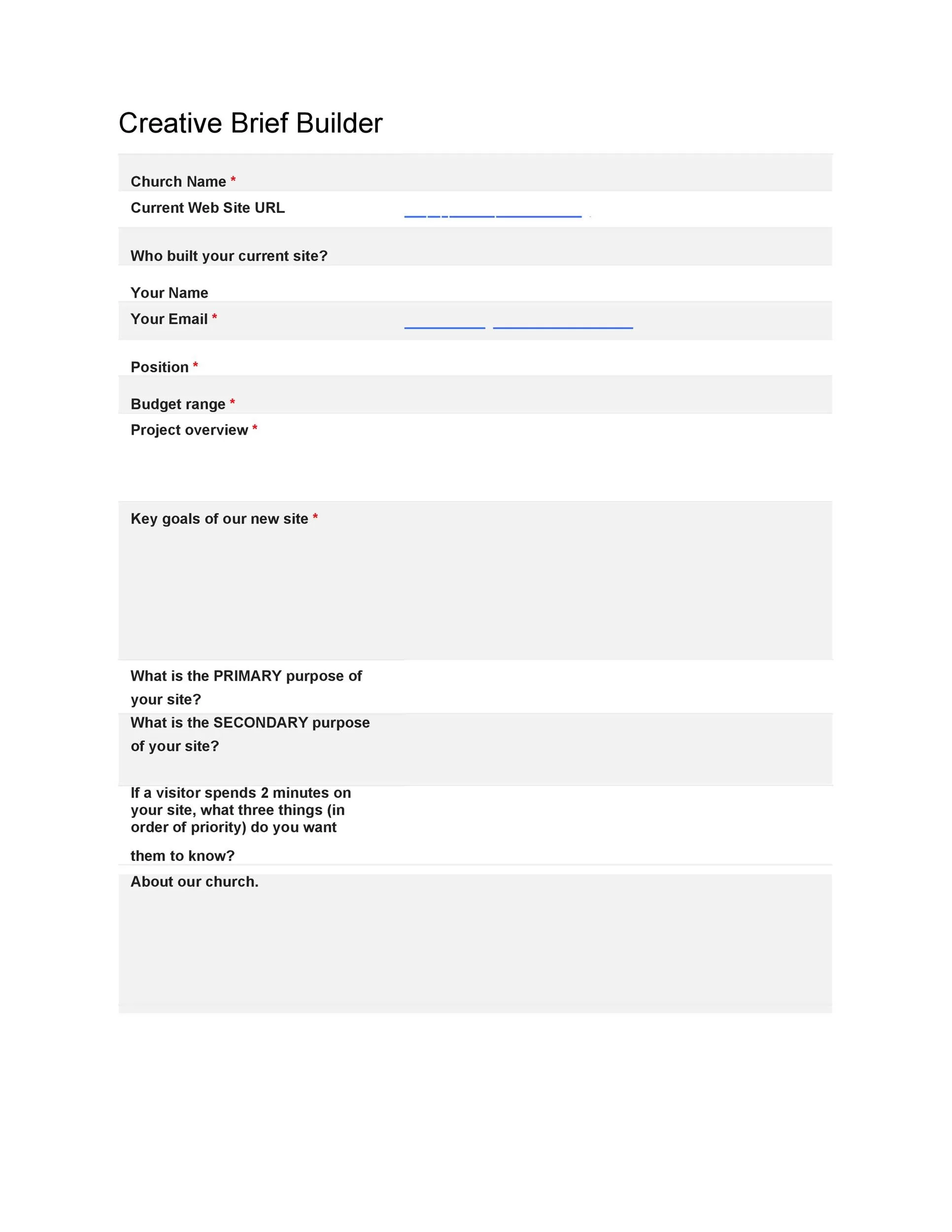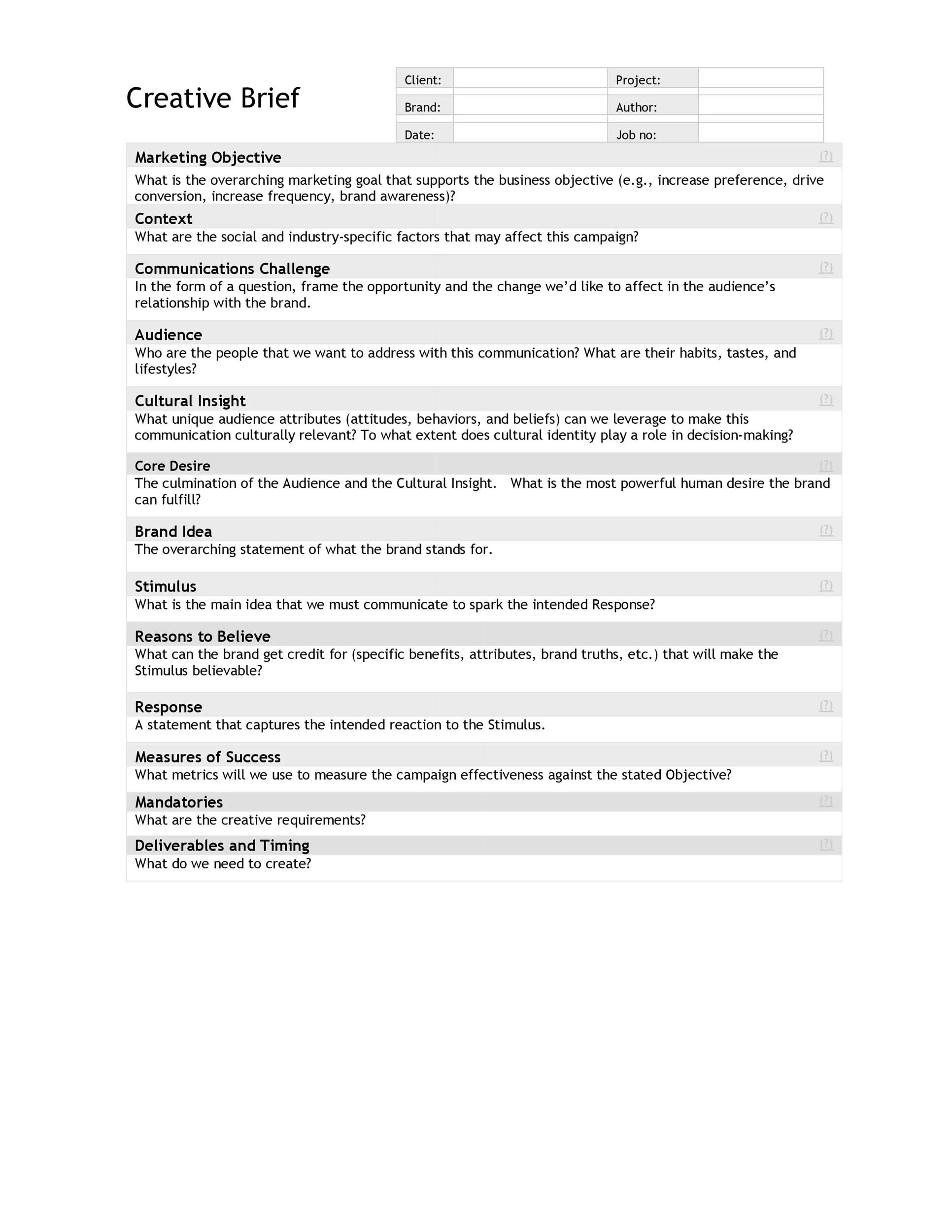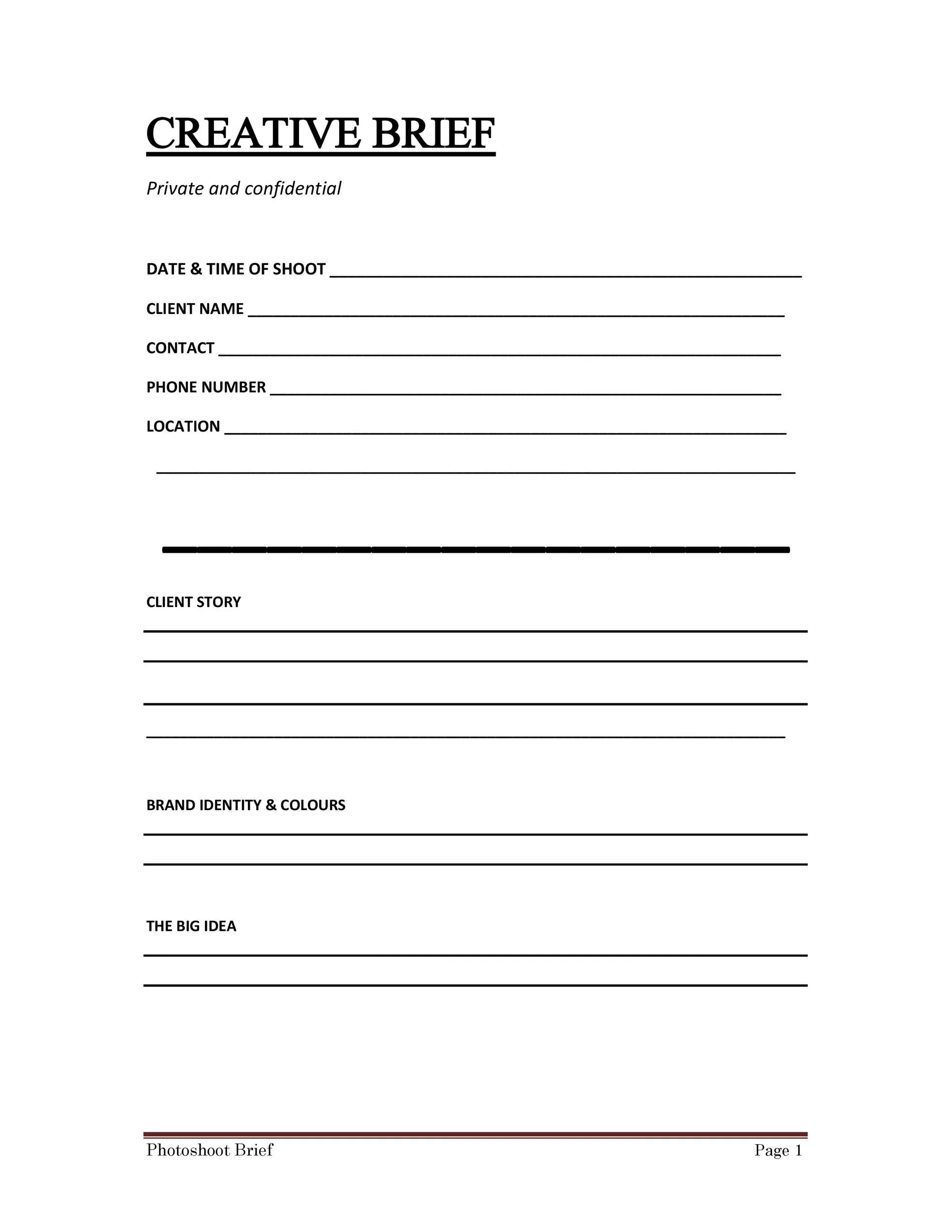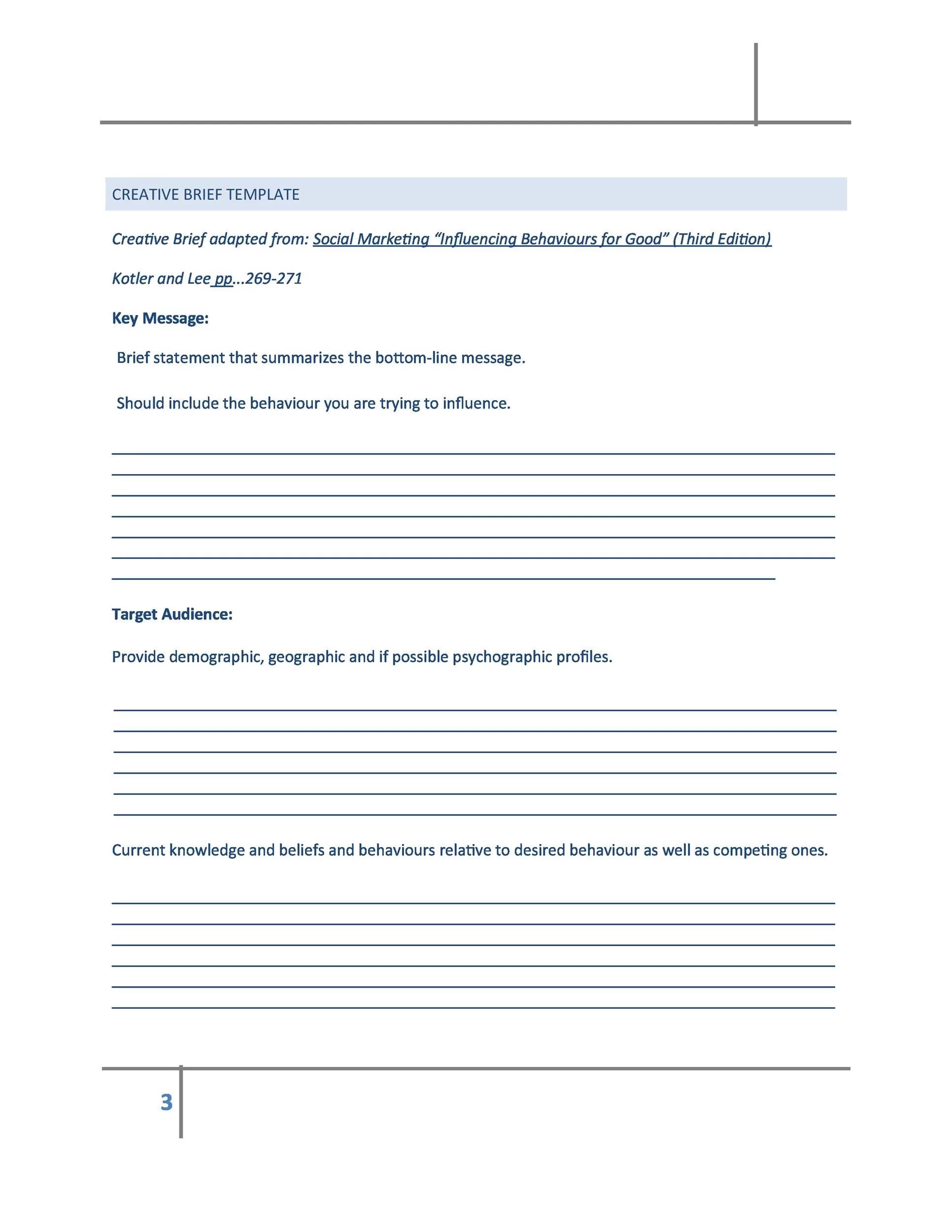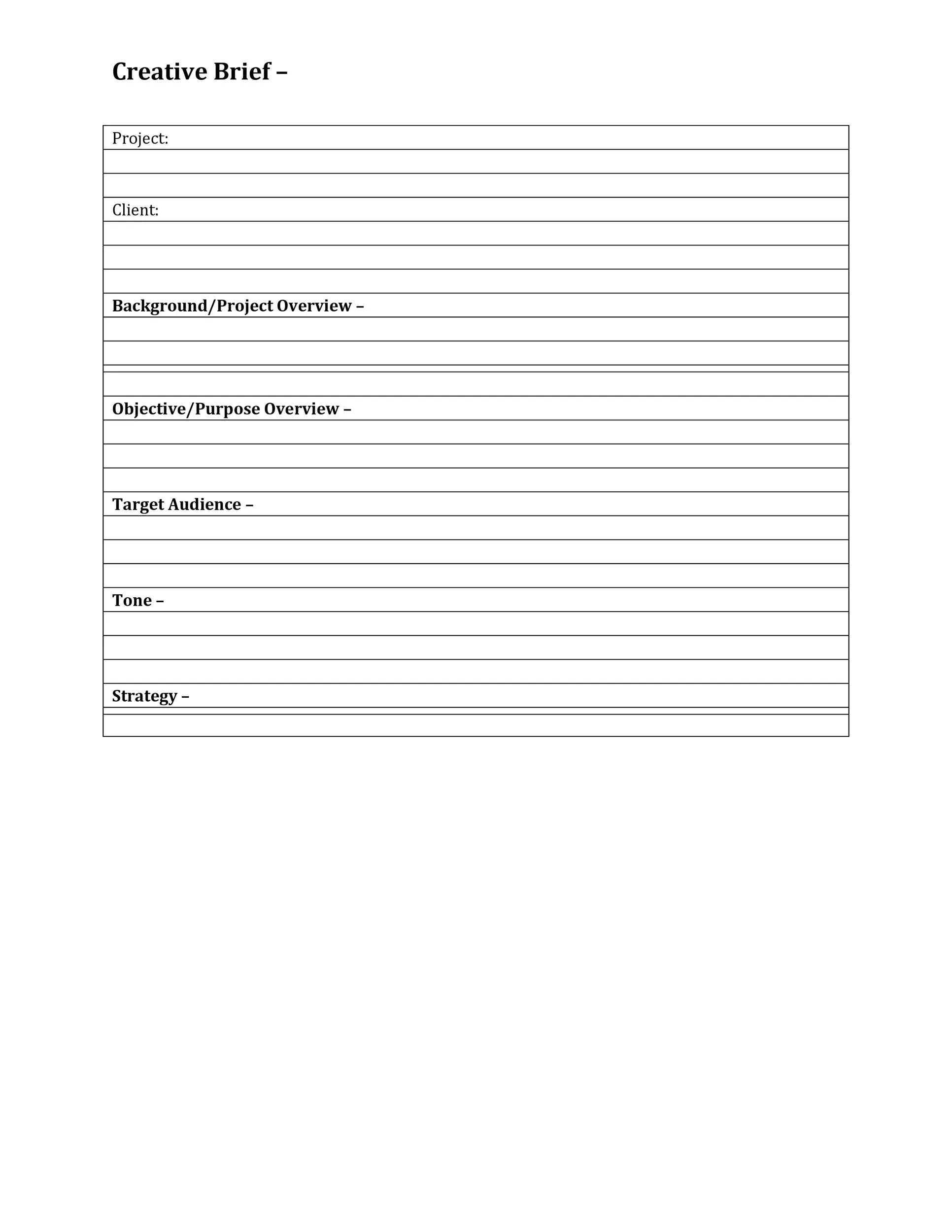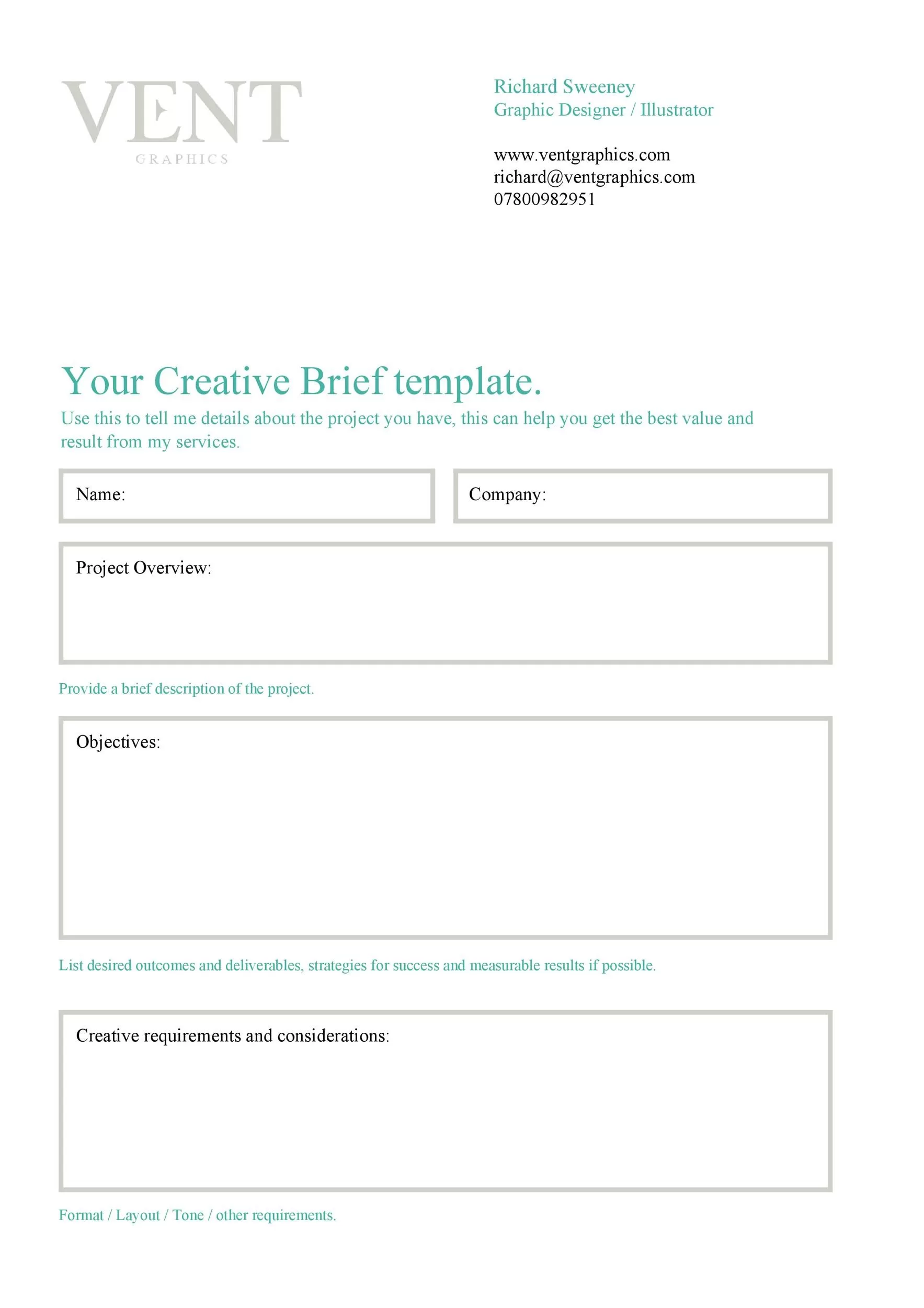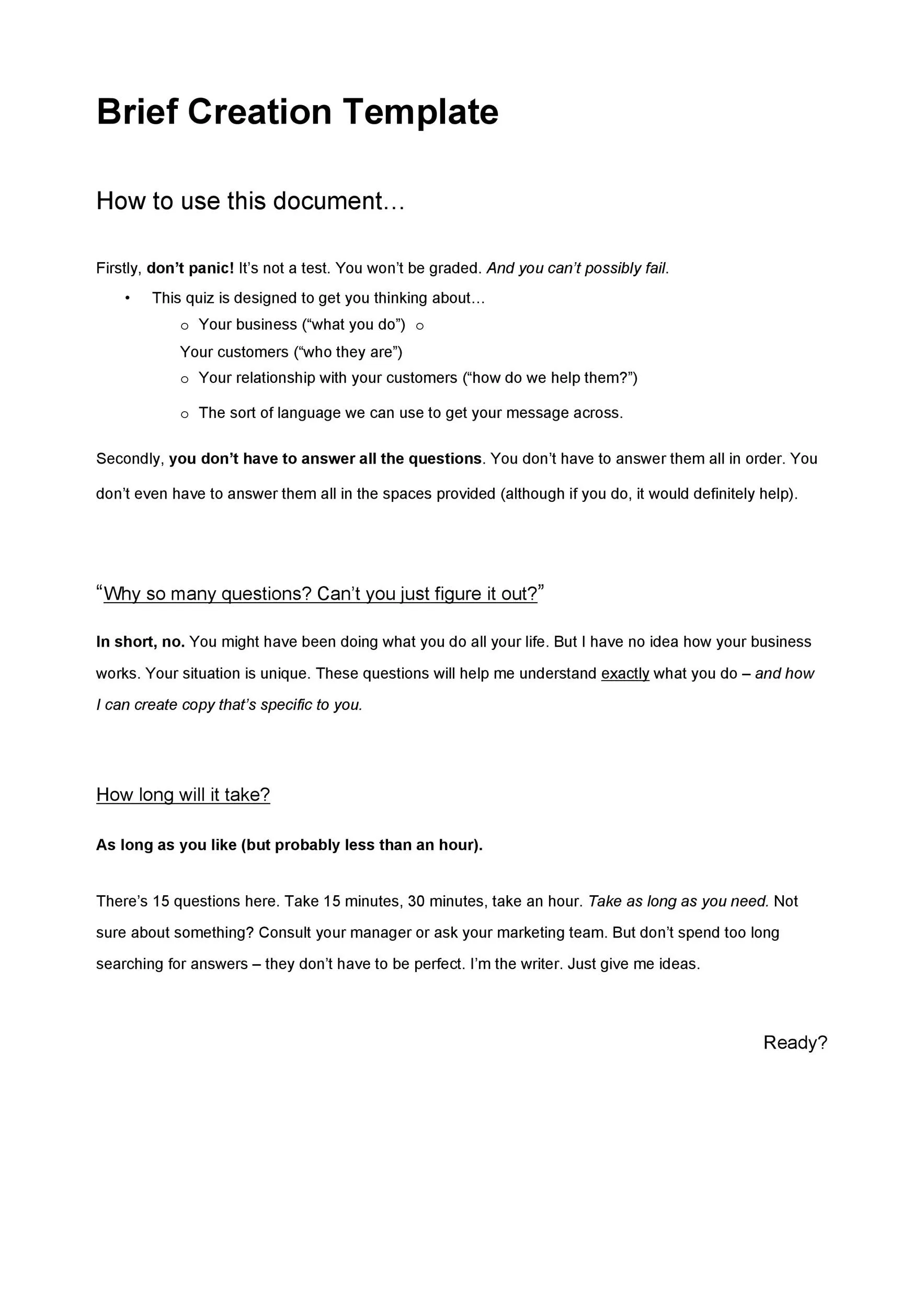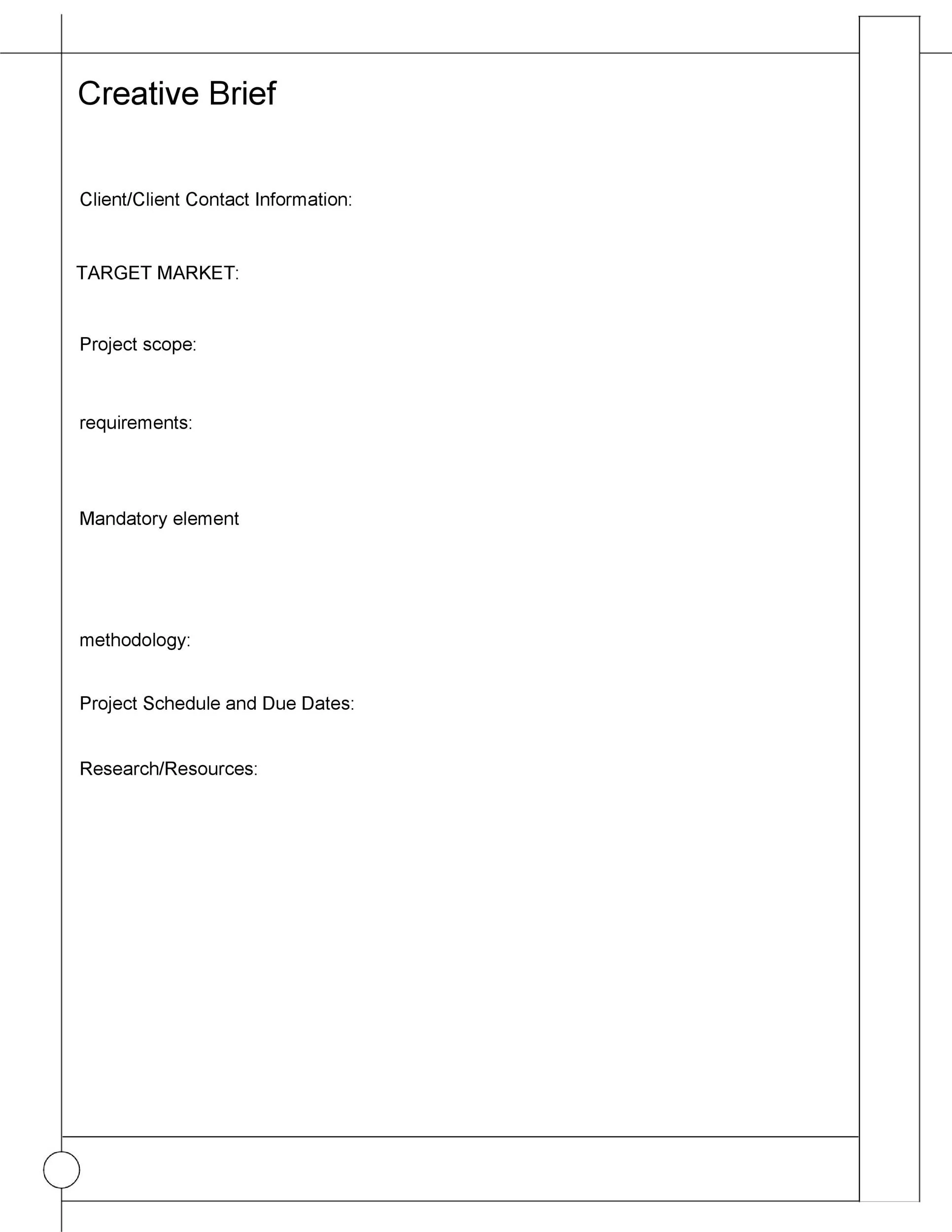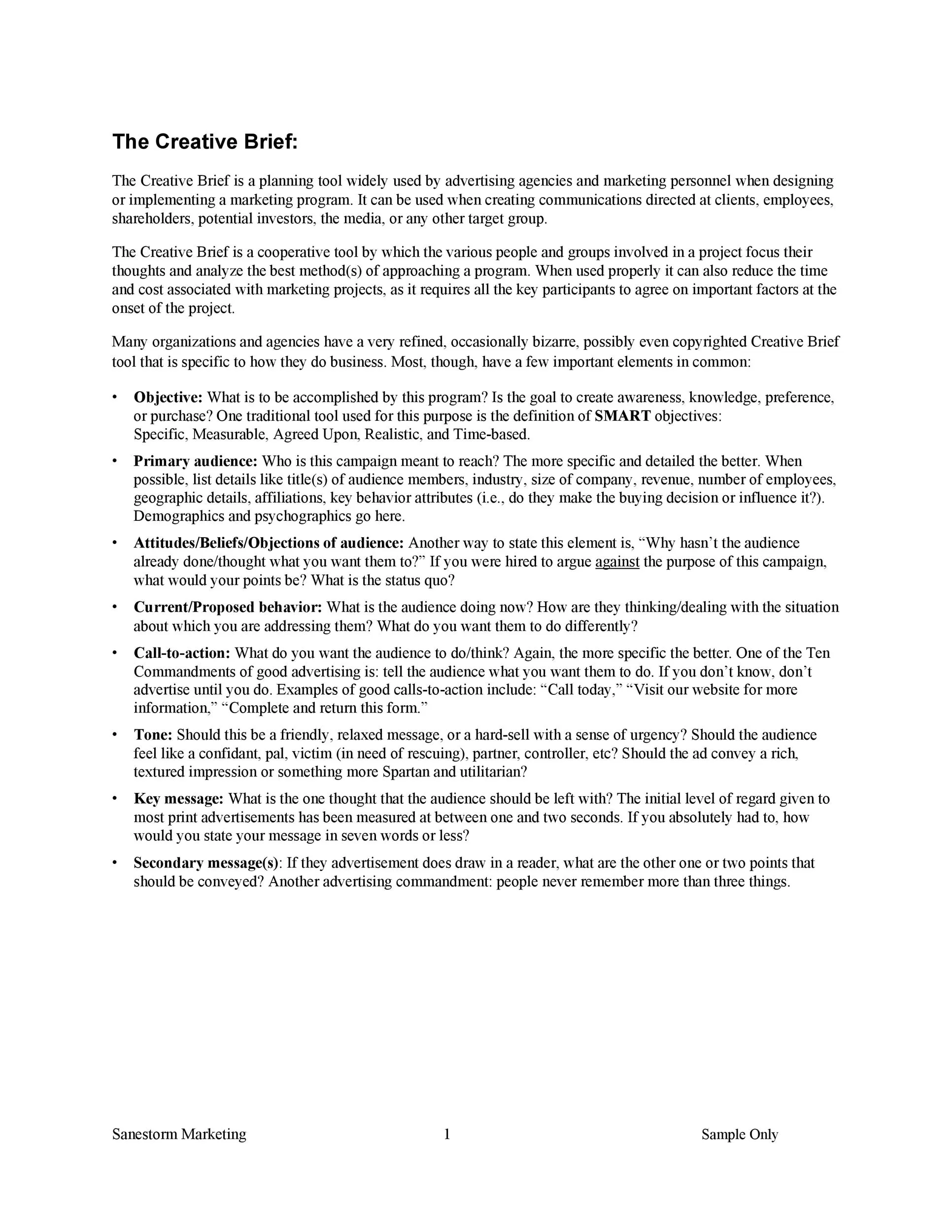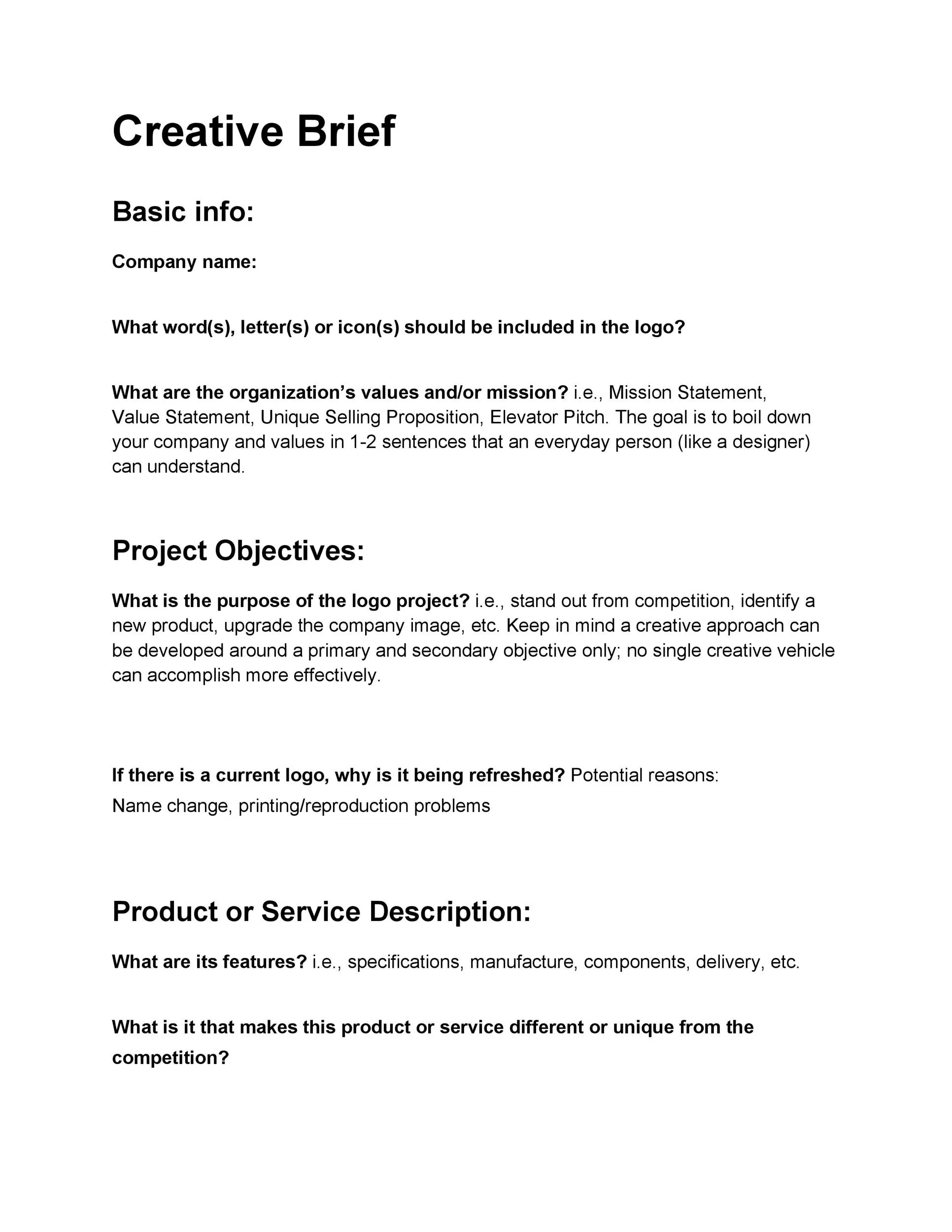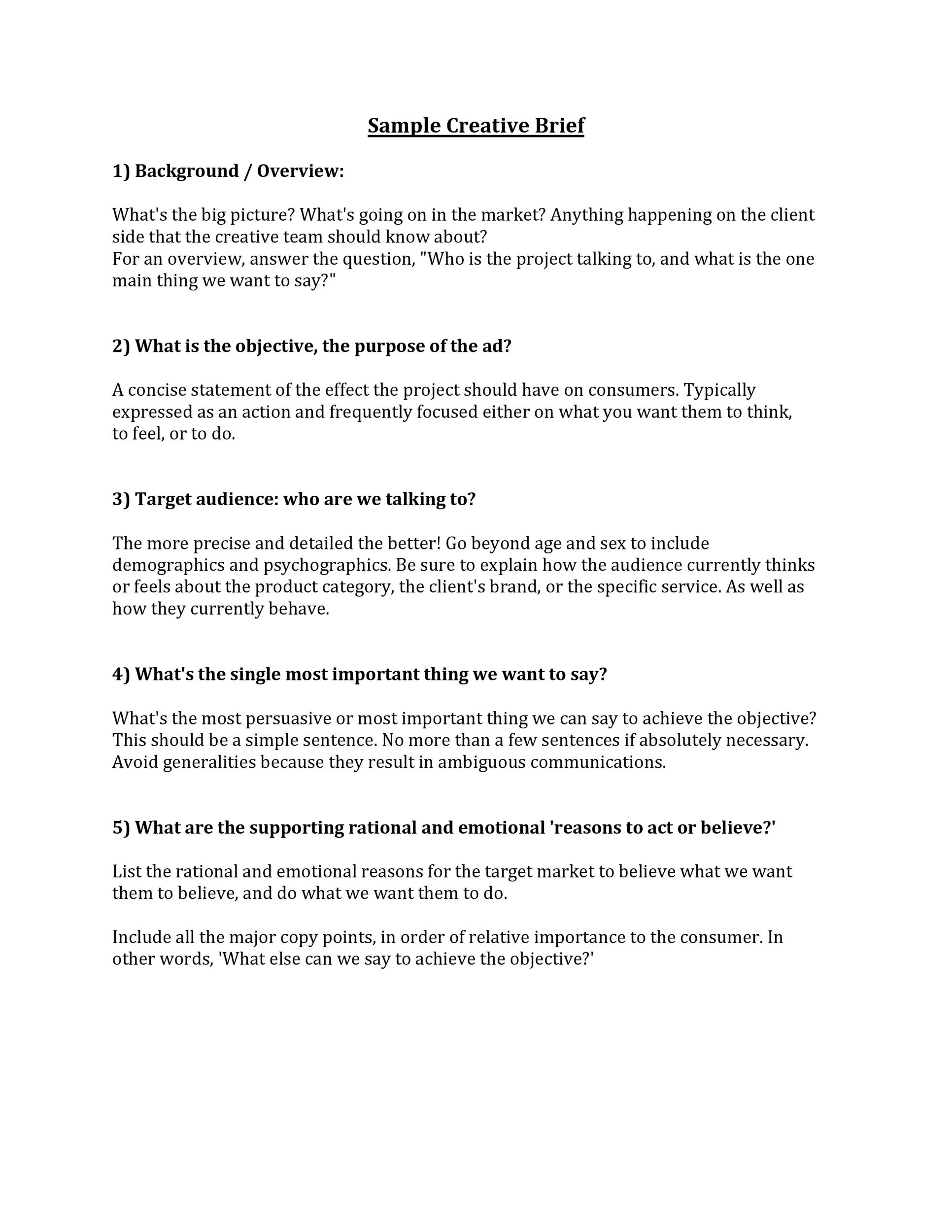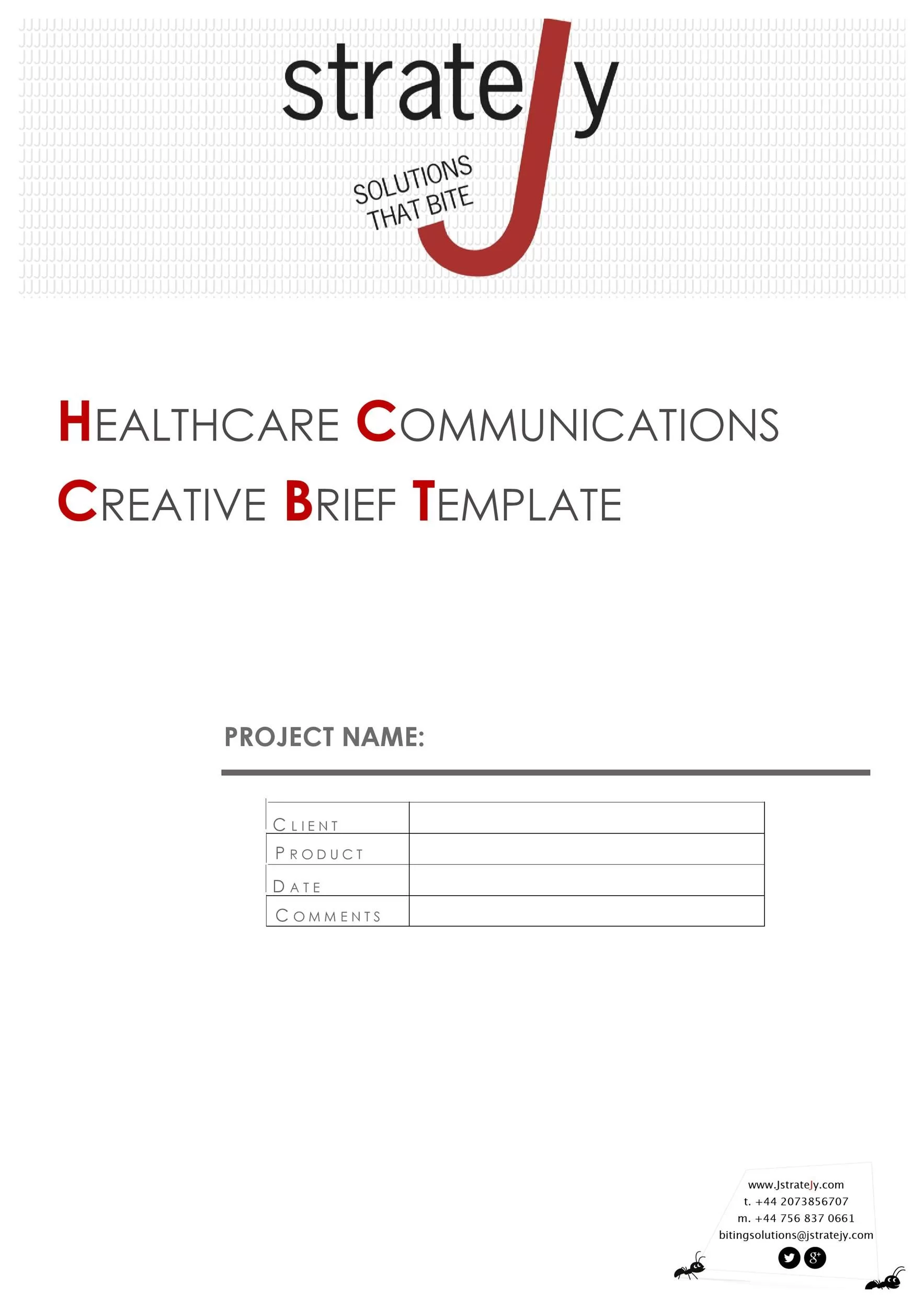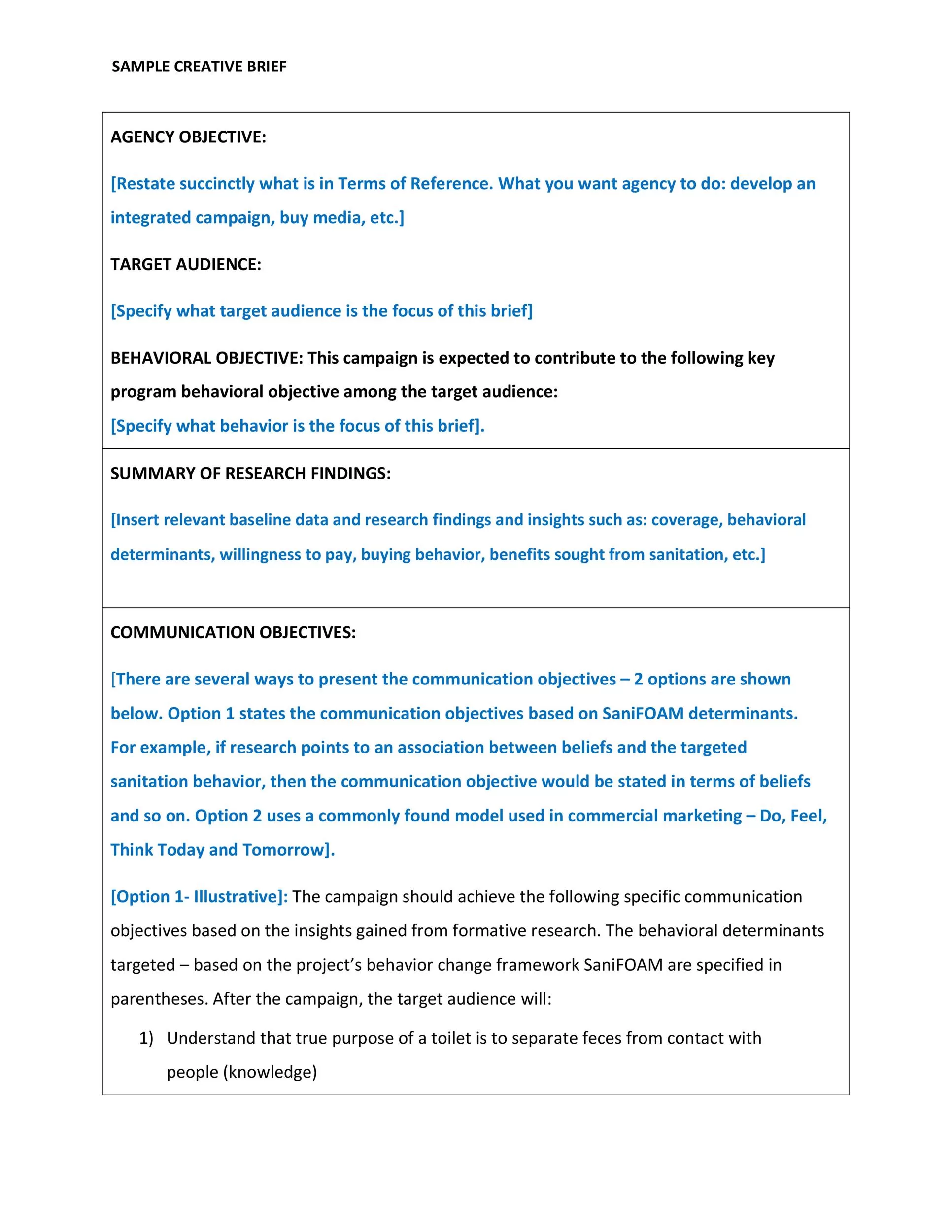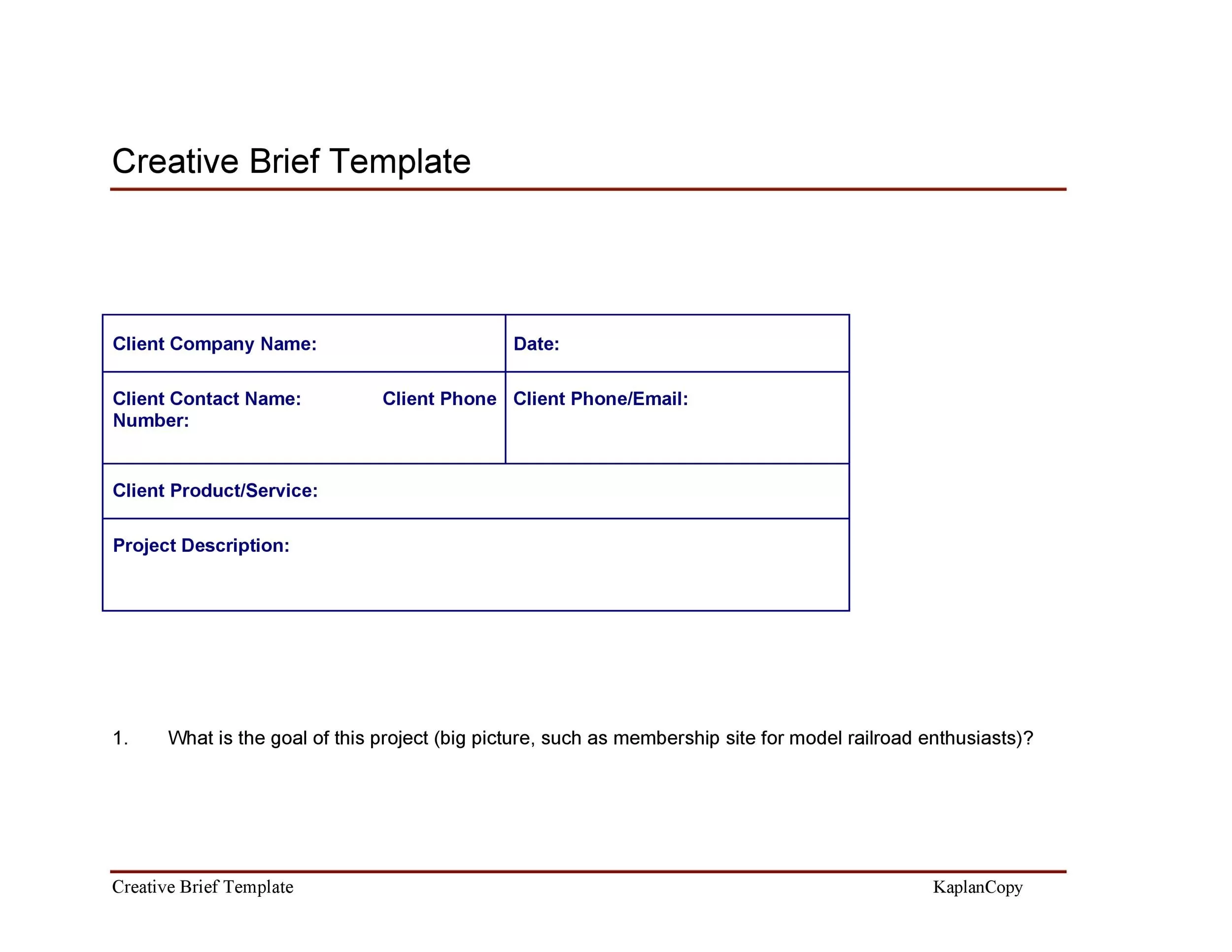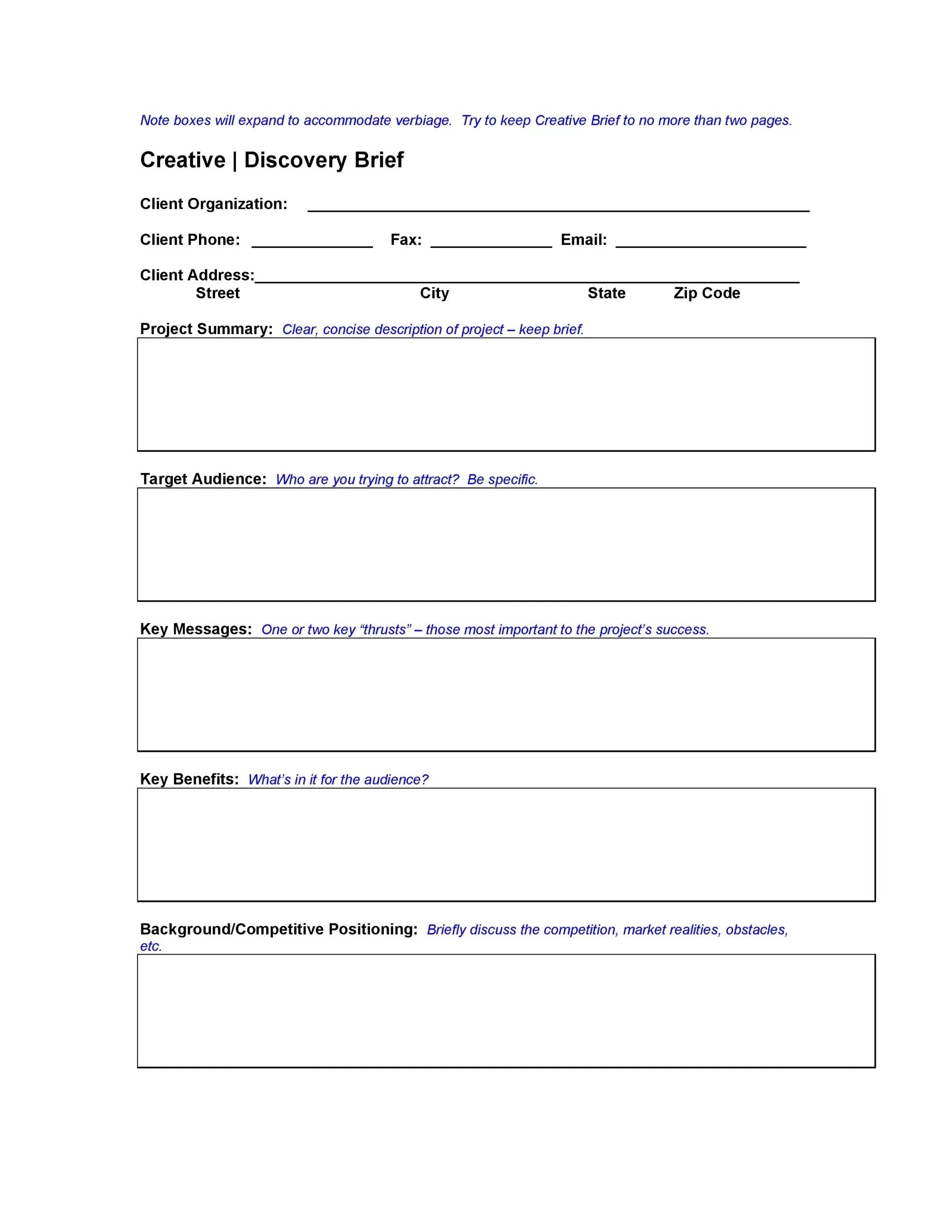In all creative projects—be it a marketing campaign, brand redesign, product launch, or production of an advertisement—clarity is of utmost importance. The creative brief, therefore, serves as that which lays the foundation on which all participants stand, articulating the project scope, objectives, and desired approach. A good creative brief template offers a systematic way to erase these documents quickly and consistently, thereby saving time while ensuring that no important detail is left out. Instead of constantly reinventing the wheel for every project, teams can rely on templates as a steady frame that aids in communication while keeping misunderstandings at bay between clients, managers, and creatives.
Contents
Definition and Purpose of Creative Briefs
In one sense, a creative brief might be characterized as an extremely short statement of the aims of a creative project, with reference to its messaging, audience, and deliverables, but in another sense, it is a much-imposing, well-thought-out strategy that provides sufficient knowledge to designers, writers, and marketers as to what they will create, why it is important, and how success will be measured. A creative brief template serves to standardize this process by presenting preformatted sections that prompt any user to include basic information yet avoid missing the essential factors. This standard approach becomes especially helpful in a fast-paced situation or among agencies dealing with too many clients.
Importance in Aligning Project Goals and Creative Direction
Clarity of goals and expectations communicates the success of any creative initiative. The creative brief allows every team member, strategist to designer, to rally from the same starting point. It is a form of alignment where written templates present pertinent information in an organized, easy to digest format, thus removing ambiguity and encouraging collaboration. A creative brief template isn’t merely a form when used correctly but turns out to be a blueprint for creative success translating productivity into innovation.
Key Components of an Effective Creative Brief
The strength of a creative brief is only as good as the clarity and depth of the information it contains. There is a specific format in which to write a creative brief, depending on the type of project or industry. However, some basic components need to be present for the brief to act as a dependable roadmap for the creative team. Templates help keep it structured by prompting users to fill in the right details and keep the project anchored in strategy from concept to delivery.
Essential Elements: Project Overview, Objectives, Target Audience, Messaging, Tone, Deliverables, Timeline, and Budget
A good creative brief opens with a project overview—a short summary of what the initiative is about and why it matters. It goes on to define the key objectives that the project seeks to achieve, which may include building brand awareness, driving leads, or launching a product. The audience definition also ranks high; a better understanding of demographic and behavioral insights ensures that the creative output strikes an authentic chord. The messaging and tone of voice would follow: what the brand wants in terms of perception and what emotions it wants to evoke. Clearly stated deliverables include perhaps a social media campaign, a brochure, a video, followed by an outline for major milestones and deadlines. Budget considerations are also mentioned; these help set realistic boundaries and foster helpful prioritization.
Customization Options for Different Industries and Projects
While an outline of a creative brief may tend to have a fixed structure in terms of contents, the allowability of some flexibility in the application of any creative brief to different industries or project scopes has its importance. For example, a marketing agency would require some area for describing a competitive landscape and major KPIs, whereas an internal communications project may have more emphasis on departmental needs and aligning stakeholders. Providing templates that have some customized flexibility for various industry-related variables would ensure the relevance and practicality of the brief.
Ensuring Clarity and Conciseness in Presentation
It must never boggle down with its information. The purpose is to share much complicated information in a format that is easy to navigate and instantly useful. This means taking care of proper headers, organized sections, and avoiding jargon and vague definitions. A light, well-organized brief would enable creative professionals to deliver their best work free of confusion and guesswork.
Here are previews and download links for these templates,
Benefits of Using Creative Brief Templates
Regardless of size, creative projects encompass a range of interdependent activities with numerous collaborators. Miscommunications and conflicting expectations or lack of information might derail timelines and multiply costs. This is where creative briefing templates come in: they constitute a universal form for translating strategy into actionable guidance, saving time while fostering uniformity, alignment, and accountability across teams. Be it a work-from-home designer or a full-fledged marketing department: applicability of a structured template yields obvious measurable advantages.
Streamlining the Briefing Process
An obvious benefit of a creative brief template is efficiency. Instead of spending hours deciding how to format a new brief, teams can use a pre-built structure that already includes all essential fields. This guarantees that every important aspect—from audience targeting to deadlines—is covered without reinventing the wheel every time. It also allows for the faster initiation of new projects, particularly in agencies or fast-paced environments where time is at a premium and client expectations are high.
Enhancing Collaboration Between Teams
Templates for creative briefs eliminate vagueness and improve communication between departments. Such a document serves as a shared reference for writers, designers, developers, and project managers as regard the creative direction and strategic intent-avoiding endless back-and-forth, shortening revision cycles, and reducing misunderstandings that result in divergent outcomes. When everyone begins on the same page, the chances of coming up with a high-quality deliverable increase tremendously.
Improving Project Outcomes Through Clear Communication
Probably the greatest benefit of a template for a creative brief is better results. Projects that begin with a brief that is well articulated are much more likely to fulfill their intended objectives, meet stakeholder approval, and stay within scope. The templates ensure the teams are not rushing to produce something but have time to think critically and strategically. Rather, they promote a disciplined, structured path of creativity, balancing inspiration and intent to yield meaningful outcomes.
Types of Creative Brief
Creative briefs aren’t universal documents. Depending on the type of the project, from industry to destination, the formats and emphases will differ for clarity and relevance. Over the years, certain templates for creative briefs have become available in varieties that are specialized for various disciplines-from marketing and design to video production and event planning. Familiarity with such types will enable teams to adopt the most efficient structure instead of using one that is generic and may miss out on key project-specific information.
Marketing Campaign Briefs
A marketing campaign brief format states the purpose, goal, and details of executing a marketing initiative. It contains data on the intended audience and key messages, plus promotional channels and performance indicators like leads, conversion, and brand impressions. Templates prove useful in aligning internal teams and external agencies to timelines that guarantee the success of launch content strategies.
Design Project Briefs
Over the visual goals, brand guidelines, and deliverables prevalent in design briefs shine. Whether addressing a logo, brochure, packaging, or web interface, all templates give much attention to creative direction, color choices, typography, file formats, and layout expectations. Many times they include sections for inspiration sources or mood boards, and are paramount to ensure visual communication trends with the brand identity.
Video Production Briefs
Video briefs include scripting, storyboarding, and production planning. These include project objectives along with descriptive identifiers such as audience, tone of voice, runtime, platform of distribution (e.g., YouTube, Instagram, TV), and budget, making it possible to synchronize all the efforts of creative directors, scriptwriters, videographers, and editors. When properly filled up, they would ensure strategic purpose in bringing together narrative, visuals, and sound.
Advertising Campaign Briefs
As advertising briefs are concerned with issues such as media planning, buyer personas, value propositions, and budget allocations, they are best suited for advertising agencies or internal teams about to kick off pay-per-click (PPC), display, or print advertising. Templates leave ample room for creative taglines, ad copy, dimensions of the formats, and scheduling for ads, all the while ensuring each element remains part of the larger marketing picture.
Event Planning Briefs
A creative brief template helps define the theme, objectives, audience engagement approaches, and venue or platform logistics for events-whether live, virtual, or hybrid. It should include roles and responsibilities, timeline milestones, branding considerations, and an outline of promotional strategy, which will ensure all players understand their part in the delivery of a smooth event experience.
Industry-Specific Templates
Some specific sectors, such as education, healthcare, SaaS, and non-profit sectors, would require customized briefs to focus more on social impact, accessibility for users, compliance, or accuracy in technical specifications. These can include beyond the expected traditional goals with respect to branding and creativity; they are significant for the operational or regulatory perspective, thus making them essential for execution of specialized projects.
Best Practices for Implementing Creative Brief Templates
A strong creative brief template is the starting point. After this comes thoughtful, consistent application across the organization, for the enhancement of workflow and the introduction of better project outcomes. When used in the true sense of the word, creative brief templates become much more than a form; they serve as a chief instrument for strategic alignment, effective communication, and enhanced project execution. Central to unlocking their value are a few important practices that foster the actual use of these templates and their effective application by teams.
Maintaining Consistency Across Documents
Creative briefs must maintain consistency for a professional outlook as well as usability. When teams apply certain themes to every framework that might share common grounds, some level of customization should then have room for more industry-or-client-specific needs. Such uniformity ensures that stakeholders can easily comprehend and contribute to briefs; it speeds up internal approvals whilst also ensuring that no critical element slips through; it also serves the purpose of properly maintaining branding standards across departments or campaigns by equalizing the format and language.
Regularly Updating Templates to Reflect Current Standards
The marketing and creative scenario keeps on changing, and so should your templates for issuing briefs. Review and update them from time to time according to any changes in business goals, creative processes, or past project feedback. For example, if you keep receiving some miscommunication regarding the tone of voice or format of deliverables, this is probably a good time to add or change that particular section of your template. If you constantly update and perfect whatever very fine change you can think of, there will be more chances your briefs would maintain their importance within a certain time period.
Training Team Members on Proper Usage
An ideally conceived template is useless if users do not know how to utilize it rightly. Short training sessions or walkthroughs can be organized to familiarize new hires or freelancers with the creative brief process. Usage guidelines or templates with examples can serve as handy references. Encouraging teams to see the brief as a collaboratively created and ever-evolving document would ensure higher acceptance and lesser misunderstanding/neglect errors occurring against it. When everyone in the team is empowered with the knowledge to properly complete and interpret briefs, it fosters alignment and ultimately yields better and successful creative deliverables.


